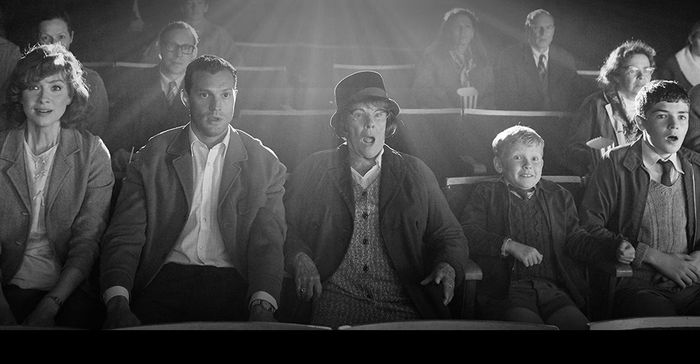Reviewing ‘Survivors: Portraits of the Holocaust’
Sofia Johanson praises how the BBC documentary commemorated Holocaust Memorial Day by painting a touching picture of Jewish survivors
Last Thursday marked 77 years since the liberation of Auschwitz-Birkenau concentration camp. January 27th also marks Holocaust Memorial Day which calls for us to remember the six million Jewish, Sinti, Roma and other persecuted peoples who perished at the hands of the Nazis, as well as victims from later genocides.
This year, a documentary was released on BBC2 that showed seven survivors, now living in the UK, being painted as part of the Prince of Wales commission for the Royal Collection. The documentary beautifully weaves together the testimonies given by the survivors, the aims of the portrait artists, and the touching interactions between sitter and artist during the process.
Over the summer of 2020, the artists either visited the survivors in their homes or scheduled zoom calls to interview them before beginning the painting process. The audience became acquainted with survivors of Auschwitz, Bergen-Belsen, and Stutthof camps, most of whom had also spent time in the ghettos of Lodz or Riga. The survivors were born in Poland, Germany, former Czechoslovakia and Hungary — the international element impressing on the audience how widespread the violence was.
“It’s beautiful to watch the development of the portraits as the artist and sitter visibly build an emotional bond”
It’s beautiful to watch the development of the portraits as the artist and sitter visibly build an emotional bond and mutual understanding of how important this project is. For example, we heard from Manfred Goldberg, who has only a single painting to remind him of his lost younger brother Herman. Clara Dummond, the artist painting Manfred, used this image of ‘Hermy’ as inspiration, leading her to work in a limited number of colours and focusing on the expression in his eyes.
Through objects that feature in the survivors’ portraits, the documentary details their personal recounts of World War Two. Lily Ebert, from Hungary, explains to artist Ishbel Myerscough how her mother gave her a small golden pendant which she had to hide each day in her bread in order to keep it from Nazi hands. We see how artist Ishbel Myerscough uses gold leaf in order to draw the spectator’s eye to the object and its miraculous survival.
Similarly, Peter Kuhfeld paints Anita Lasker-Wallfisch in front of two photographs that depict her playing the cello as a young woman. Anita explains to the artist that playing in the Auschwitz Womens’ Orchestra probably saved her life from an emotional perspective. Hearing these memories through the conversations between sitter and artist offers a more intimate, personal experience, with the more painful testimony reserved for separate camera interviews.
“Everyone should take the opportunity to hear the testimony, and also the optimism of these ‘seven remarkable individuals’”
Some of the testimony is hard, but important, to hear. We hear about Helen Aronson, who looked after children in the ghetto of Lodz, but had to wave goodbye to them as they screamed her name from a truck deporting them to extermination camps. Yet there is occasionally some optimism hidden within the survivors’ messages; Anita Lasker-Wallfisch’s account of Belsen is harrowing, but she explains she is glad people cannot understand “what it was like” — she matter-of-factly expresses that we don’t need to “know” the horrors of Belsen, that we must simply ensure such experiences are never repeated.
As the documentary draws to a close, we see the portraits for the first time at the same time as the survivors, as they meet Prince Charles and Camilla at the official unveiling. It is an emotional scene as the guests express their gratitude at meeting the Prince of Wales, before he gently impresses on them that the honour is all his. The portraits are all drastically different; some black and white, some vibrantly coloured, some traditional, some painted from alternative angles or using an odd palette of colours. The survivors attend the unveiling with their families, who all express how proud they are of their parents or grandparents, to the great embarrassment of the survivors.
Personally, I found Massimiliano Pironti’s portrait of Arek Hersh the most powerful; the nonagenarian’s every wrinkle is conveyed as if in a photograph, and the loose grip of his right hand on his left wrist is profound — he symbolically touches the place where he was branded with a tattoo at Auschwitz.
Overall, the documentary was immensely powerful, and of course emotional, but it stopped short of being an hour of lamenting Nazi horrors. The survivors fondly express that Britain is their new home and the documentary is peppered with humorous moments. For example, Lily Ebert asks Ishbel Myerscough whether she can paint her as an 18-year-old, and Jenny Saville candidly admits she usually paints people in the nude.
The timing of the commission of the portraits and the documentary is impossible to ignore: it will not be that long until we no longer have with us first-hand witnesses to the Holocaust. Thus everyone should take the opportunity to hear the testimony, and also the optimism of these “seven remarkable individuals”, as Prince Charles called them in his foreword to the new collection.
 News / Caius mourns its tree-mendous loss23 December 2025
News / Caius mourns its tree-mendous loss23 December 2025 News / Clare Hall spent over £500k opposing busway 24 December 2025
News / Clare Hall spent over £500k opposing busway 24 December 2025 Comment / The ‘class’ of Cambridge24 December 2025
Comment / The ‘class’ of Cambridge24 December 2025 Interviews / Politics, your own way: Tilly Middlehurst on speaking out21 December 2025
Interviews / Politics, your own way: Tilly Middlehurst on speaking out21 December 2025 Comment / Yes, I’m brown – but I have more important things to say22 December 2025
Comment / Yes, I’m brown – but I have more important things to say22 December 2025








